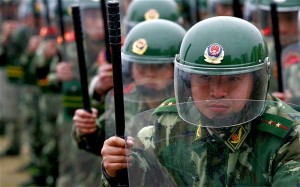Recently, a 25-page training manual was leaked to the public. The manual was utilised by members of the People’s Armed Police who reside in Tibetan areas of Sichuan province. The training document reveals that the struggle to keep Tibetans under control is inflicting severe psychological damage on Chinese armed forces.
Some of the manual’s guidance details fighting depression and post-traumatic stress disorder (PTSD). A particular section is titled: “How should you deal with flashbacks of brutal episodes?” In this portion of the document it refers to two specific incidents relating to self-immolation and the murdering of protesters. One of the occurrences happened in Aba county of March 16, 2011 when a Tibetan monk named Phuntsok self-immolated in a market. The other took place in Seda and Ganzi counties during protests by Tibetans on March 18, 2009 where Chinese armed police shot into the crowed.
The document was discovered and disseminated by the Tibetan Centre for Human Rights and Democracy (TCHRD), a non-governmental organisation run by Tibetans in exile in Dharamshala. The TCHRD stated that this report refutes the claim that life is “harmonious” under Chinese rule.
Furthermore, to combat the problems arising from troops being exposed to traumatic incidents, China has introduced a new, microscopic surveillance system to keep watch of the ethnic population.





 Print
Print Email
Email